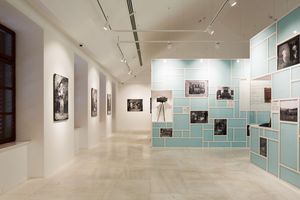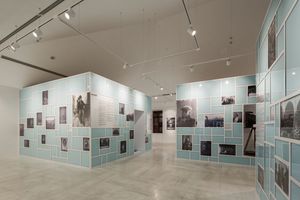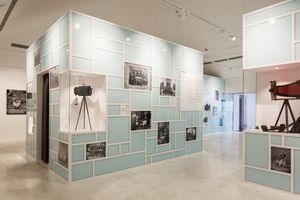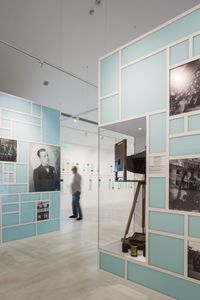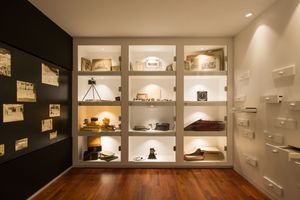Permanent Exhibition
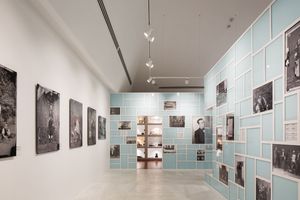
The exhibition of the permanent collection is unveiled through three thematic rooms dedicated to three generations of the Marubi dynasty: Pietro Marubbi, Kel Marubi e Gegë Marubi. The historical background relates to important moments for the city of Shkodra and the Albanian history. This stimulates a multisensory experience for the visitor in the exhibition space.
Thematic room 1
Pietro Marubbi’s Photographic Studio
The Photographic Studio of Pietro Marubbi (1834–1903) worked as a theatrical stage designed to perform the ritual of photography. Painted backdrops representing nature were mixed with other elements such as carpets, chairs and vegetation creating all together a hybrid three dimensional environment. The control of the natural light coming from the side window by using curtains provided the adequate luminosity and atmosphere for each photo. The Marubbi Photo Studio was a magic machine specially designed to create the iconic photographs that made the studio of Pietro Marubbi famous.
Thematic room 2
Kel Marubi’s dark room
Kel Marubi (1869-1940) experienced in the dark room some of the most important developments in photographic technique of that time. One of these important changes was the evolution of the negatives from glass plates to celluloid films. The technical advances of Kel Marubi’s time not only made the development of the negatives in the laboratory easier minimizing its cost, but also had an impact on the reduction of the size and the weight of the cameras. This technical revolution opened a new field of opportunities for modern photography and made photography more accessible to the general public.
Thematic room 3
Gegē Marubi’s Archive
In 1970 Gegë Marubi (1907-1984) donated to the Albanian state the archive created by the three generations of photographers of the Marubi dynasty. This archive consisted of 493,819 negatives, 246 letters and telegrams, 219 cameras and different kinds of photographic material. The Marubi archive is part of the collection of this National Museum of Photography which has been enriched by the contributions of other important Albanian photographers such as Kolë Idromeno, Shan Pici, Dedë Jakova, Pjetër Rraboshta, Angjelin Nenshati and many others. This photo collection is not only an essential instrument to understand the evolution of the photography in Albania, but also an important evidence to understand the modern history of Albania, its people, the variety of traditions, diversity and definitely, the richness of Albanian culture.
